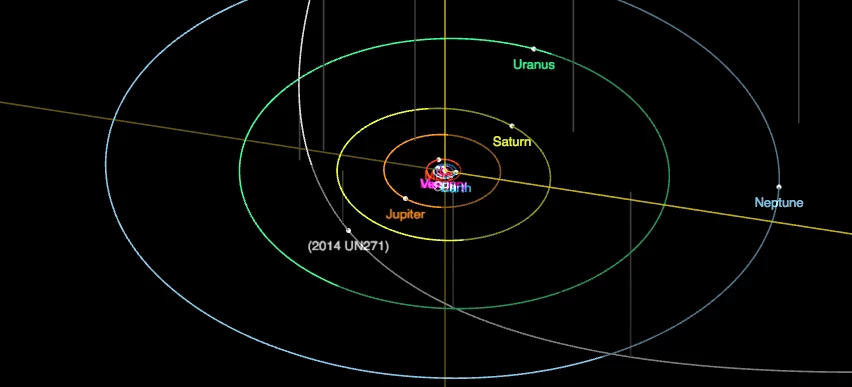Editor’s note: New details about this fascinating object have emerged since we wrote this article – here's the latest update.
The outskirts of our solar system is teeming with mysterious objects – and now one of them is heading our way. Astronomers have discovered a minor planet that’s about to make its closest pass to the Sun on its 600,000-year orbit.
The object in question is designated 2014 UN271, and it was only recently identified in data from the Dark Energy Survey captured between 2014 and 2018. Size estimates place it anywhere between 100 and 370 km (62 and 230 miles) wide. If it’s a comet, it’s quite a big one, especially for one coming from the outer solar system.
“[That] puts it on a similar scale, if not larger than, Sarabat's huge comet C/1729 P1, and almost undoubtedly the largest Oort Cloud object ever discovered – almost in dwarf planet territory!” says Sam Deen, a citizen astronomer, in a post on the Minor Planet Mailing List (MPML) forum.
But by far the most intriguing thing about 2014 UN271 is its orbit around the Sun. This thing is extremely eccentric, journeying between the inner solar system and the Oort cloud that marks the boundary of interstellar space over a period of 612,190 years.
And it turns out, astronomers are about to witness the closest pass of this incredible round trip. Currently, 2014 UN271 is about 22 Astronomical Units (AU) from the Sun (for reference, Earth is 1 AU from the Sun). That means it’s already closer than Neptune, at 29.7 AU. And it’s not stopping there – it’s already traveled 7 AU in the last seven years, and at its closest in 2031, it’s expected to pass within 10.9 AU of the Sun, almost reaching the orbit of Saturn.
Before then, it’s expected to develop the characteristic coma and tail of a comet, as icy material on its surface vaporizes from the heat of the Sun. This close pass would give astronomers an unprecedented close look at Oort cloud objects.
Unfortunately for us amateurs on the ground, don’t expect to see a show on the scale of Halley’s comet. While it’s too early to tell for sure, Deen calculates that 2014 UN271 would, at best, become about as bright as Pluto in the night sky, but more likely it’ll reach the brightness of Pluto’s moon Charon. Still, we’ll probably get some amazing shots from telescopes and observatories of the time.
After its close pass, 2014 UN271 will then hurtle back out into the inky blackness, on a several-hundred millennia return trip to the Oort cloud, and an incredible peak distance of almost 60,000 AU.
Sources: JPL Solar System Dynamics, Minor Planet Center, MMPL forum




